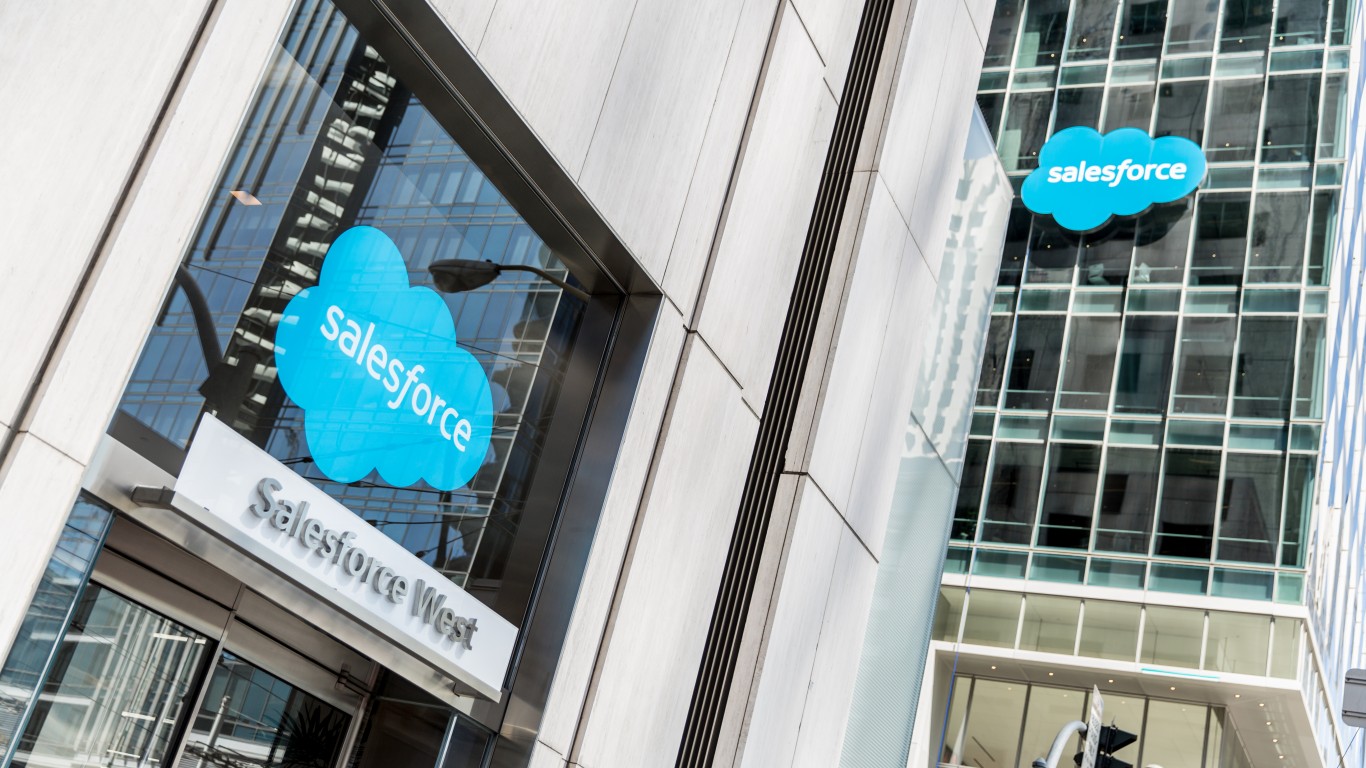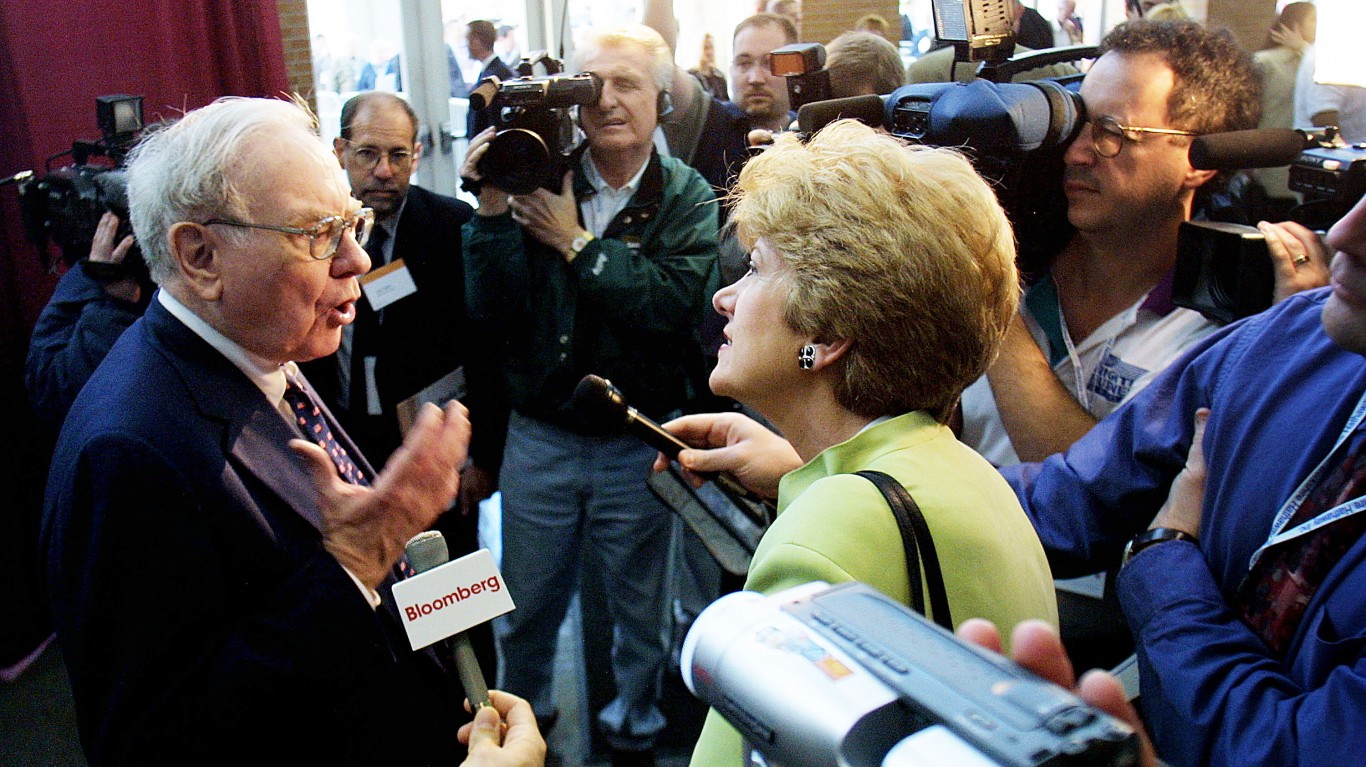
In early morning trading Tuesday, the Dow Jones industrials were 0.31% lower, the S&P 500 was down 0.2% and the Nasdaq traded flat. Premarket trading did not push equities out of Monday’s doldrums.
After markets close Monday, Pinterest beat the consensus earnings per share (EPS) estimate by a penny but fell short on revenue. The social media company also announced a $500 million buyback program and the departure of the chief financial officer. Shares traded down 4.2% shortly after Tuesday’s opening bell.
NOV beat estimates on both the top and bottom lines. The oilfield services firm did not offer guidance, but CEO Clay Williams said NOV believes “that the world simply must rebuild and fortify its petroleum supply capability soon and a sustained oil and gas up-cycle is required to increase energy security across the globe.” The stock traded up about 2%.
Simon Property Group also beat both top-line and bottom-line estimates. The mall operator issued fiscal 2023 net income guidance of $6.35 to $6.60 per share and comparable funds from operations of $11.70 to $11.95 per share. Shares traded down a bit more than 2%.
Before U.S. markets opened on Monday, BP reported EPS that fell short of expectations by a penny and revenue above the consensus estimate. The energy supermajor also said it would slow its transition to low-carbon energy and boost spending on oil and gas production. Shares traded up 5.2%.
Centene beat estimates on both the top and bottom lines. The health care company also reaffirmed previous fiscal 2023 guidance. Shares traded down about 1.4%.
Linde posted an EPS beat but missed on revenue. The industrial gas producer raised first-quarter and full-year guidance, and the stock traded up about 0.4% in the first 10 minutes of Tuesday’s regular trading session.
After markets close Tuesday, Enphase Energy, Fortinet and Lumen are set to report quarterly results. CVS Health, Fox and Uber will post earnings first thing Wednesday morning.
Here is a look at what to expect when the following four firms share their results after U.S. markets close on Wednesday.
Affirm
Since posting an annual high one year ago, shares of payment processor Affirm Holdings Inc. (NASDAQ: AFRM) have dropped by around 73%. Even a year-to-date gain of more than 75% has left the stock in a big hole. A deal giving Affirm the exclusive right to provide buy now, pay later (BNPL) services to Amazon expired last week. Amazon may now look for another provider while Affirm has another two years to offer its services without exclusivity. Then the two companies can talk it over again.
Of 19 analysts covering Affirm stock, seven have a Buy or Strong Buy rating and nine others rate it at Hold. At a recent price of around $17.00, the shares have outrun their median price target of $16.00. Based on the high price target of $46.00, the upside potential for the stock is about 170%.
Analysts expect Affirm to report fiscal second-quarter revenue of $416.33 million, which would be up 15.1% sequentially and by 15.3% year over year. They also expect the company to report an adjusted loss per share of $0.99, worse than the prior quarter’s loss of $0.86 per share and worse than the year-ago loss of $0.57 in the comparable quarter. For the full 2023 fiscal year ending in June, Affirm is expected to post a loss per share of $3.44, worse than last year’s loss of $2.51 per share, on revenue of $1.64 billion, up 21.4%.
Affirm is not expected to post a profit in 2023, 2024 or 2025. The enterprise value to sales multiple is expected to be 4.6 in 2023. Based on average estimated sales of $2.09 billion and $2.59 billion for 2024 and 2025, respectively, the multiple is 3.6 for 2023 and 2.9 for 2024. The stock’s 52-week trading range is $8.62 to $83.57. Affirm does not pay a dividend. Total shareholder return for the past year was negative 72.9%.
Disney
Over the past 12 months, Walt Disney Co. (NYSE: DIS) has seen its share price decline by more than 22%. Since Disney brought back CEO Roger Iger in mid-November, the stock price has risen by more than 12%, but Disney’s difficulties run much deeper. What will matter when the Dow component reports first-quarter results is what Iger plans to do to right the ship. The company has come under attack from Florida Governor Ron DeSantis, who wants to strip Disneyworld of its special tax status, streaming growth has slowed and Steamboat Willie has lost trademark protection.
Analysts remain solidly bullish on the stock. Of 30 brokerages covering the firm, 25 have a Buy or Strong Buy rating and the rest rate the shares at Hold. At a price of around $110.00 a share, the upside potential based on a median price target of $120.00 is about 9.1%. At the high target of $177.00, the upside potential is nearly 61%.
First-quarter fiscal 2023 revenue is forecast at $23.29 billion, up 15.6% sequentially and 6.7% higher year over year. Adjusted EPS are pegged at $0.79, down 164.5% sequentially and by 25.5% year over year. For the fiscal year ending in September, analysts expect Disney to report EPS of $4.15, up 17.7%, on sales of $90.57 billion, up 9.5%.
Disney stock trades at 26.4 times expected 2023 earnings, 20.6 times estimated 2024 earnings of $5.33 per share and 17 times estimated 2025 earnings of $6.46 per share. The stock’s 52-week range is $84.07 to $157.50. The Mouse House does not pay a dividend, and total shareholder return for the past year was negative 22.64%.
MGM Resorts
Resort and casino operator MGM Resorts International (NYSE: MGM) has seen its share price slip by about 7.4% over the past 12 months. From a high almost exactly one year ago, the stock fell to a yearly low in June and bounced back to gain 52% since. The lockdowns in China drove a third-quarter loss per share, and those lockdowns were not lifted until the fourth quarter was in the books. The company’s mobile betting app and more visitors to Las Vegas helped mitigate the losses in China but are unlikely to overcome them.
Sentiment is bullish on MGM stock, with 13 of 18 analysts having a Buy or Strong Buy rating and the rest rating it at Hold. At a share price of around $41.00, the upside potential based on a median price target of $49.00 is 19.5%. At the high price target of $67.00, the upside potential is 63.4%.
The consensus third-quarter 2021 revenue estimate is $2.42 billion, up 6.8% sequentially and more than double last year’s third-quarter sales. MGM is forecast to post a loss per share of $1.57, worse than the prior quarter’s loss of $1.39 and also worse than the year-ago quarter’s EPS of $0.03. For the full year, analysts are expecting a loss per share of $2.79, much worse than last year’s loss per share of $0.67, on sales of $12.88 billion, up 33.1%.
MGM shares trade at 76.3 times estimated 2023 earnings of $0.54 and 34.9 times estimated 2024 earnings of $1.18 per share. The stock’s 52-week range is $26.41 to $49.00. MGM pays an annual dividend of $0.01 (yield of 0.02%), and total shareholder return for the past year was negative 7.38%.
Robinhood
Within a week of its initial public offering in late July last year, shares of Robinhood Markets Inc. (NASDAQ: HOOD) had doubled in price. As of Monday’s close, the stock traded 70% below that high. Since the beginning of the year, however, the stock has added just over 30% to its share price.
In an interview with The Wall Street Journal, the company’s chief brokerage officer spelled out Robinhood’s objections to a recent SEC proposal that would ban payment for order flow (PFOF), a practice that made it possible for the company to offer no-commission trades. If adopted, the proposal will replace PFOF with a high-speed auction that would determine which trading house would execute the transaction.
Just 14 brokerages cover the stock. Of those, only three have a Buy or Strong Buy rating, and seven more rate the stock at Hold. At Monday’s closing price of $10.60, the shares have outrun their median price target of $10.00. At the high price target of $25.00, the upside potential is 136%.
For the fourth quarter of 2022, revenue is forecast at $395.16 million, up 9.5% sequentially and by 8.9% year over year. Analysts are looking for an adjusted loss per share of $0.08, compared to a loss of $0.10 per share in the previous quarter and the year-ago loss of $0.49 per share. For the full 2022 fiscal year, current consensus estimates call for an adjusted loss per share of $0.96, far below the 2021 fiscal year loss of $7.49 per share. Revenue is forecast at $1.37 billion, down 24.5%.
Robinhood is not expected to post a profit until 2025. The 52-week trading range is $6.81 to $16.49. The company does not pay a dividend. The total shareholder return for the past year was negative 30.17%.
Travel Cards Are Getting Too Good To Ignore (sponsored)
Credit card companies are pulling out all the stops, with the issuers are offering insane travel rewards and perks.
We’re talking huge sign-up bonuses, points on every purchase, and benefits like lounge access, travel credits, and free hotel nights. For travelers, these rewards can add up to thousands of dollars in flights, upgrades, and luxury experiences every year.
It’s like getting paid to travel — and it’s available to qualified borrowers who know where to look.
We’ve rounded up some of the best travel credit cards on the market. Click here to see the list. Don’t miss these offers — they won’t be this good forever.
Thank you for reading! Have some feedback for us?
Contact the 24/7 Wall St. editorial team.

 24/7 Wall St.
24/7 Wall St. 24/7 Wall St.
24/7 Wall St.



